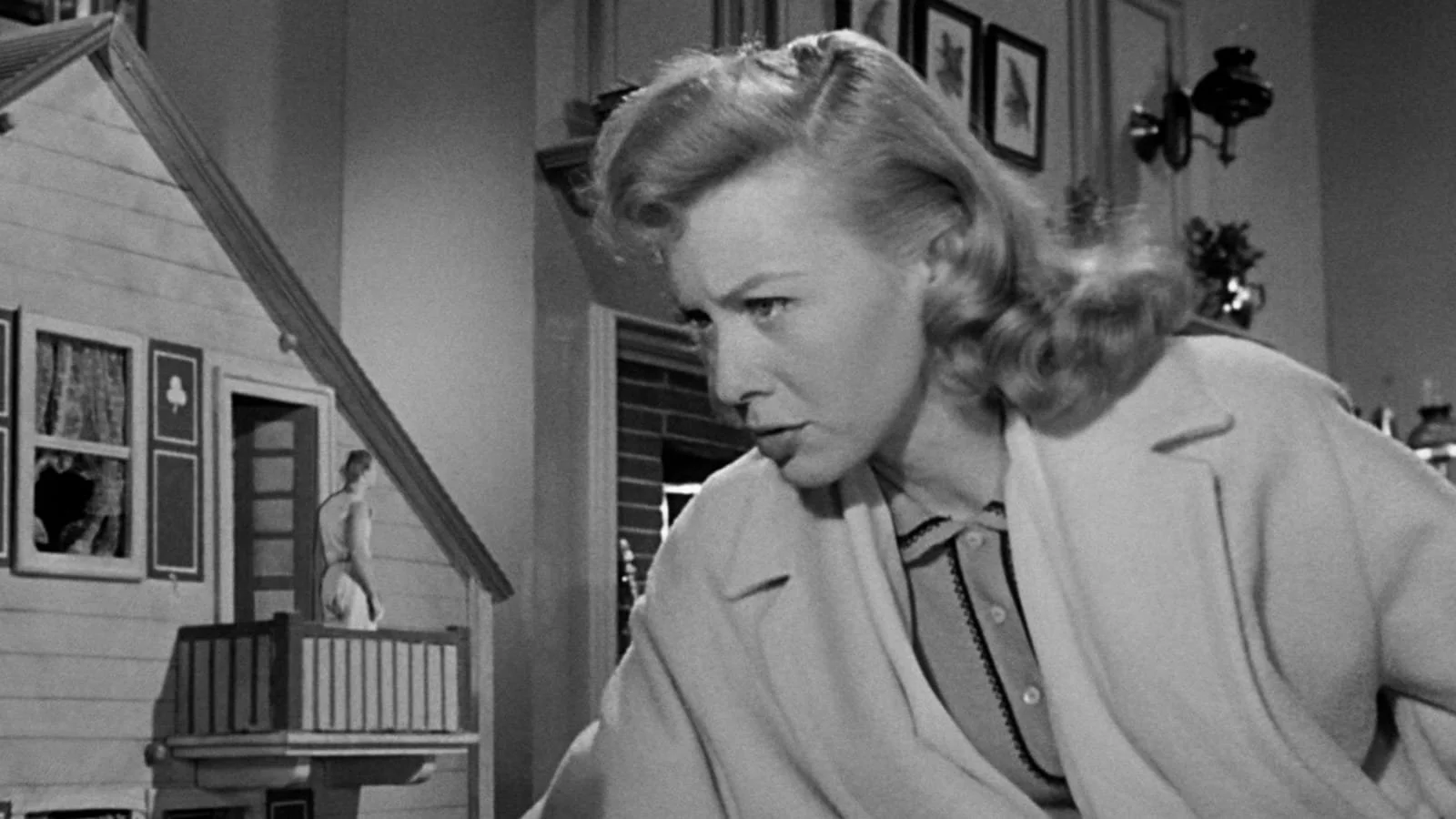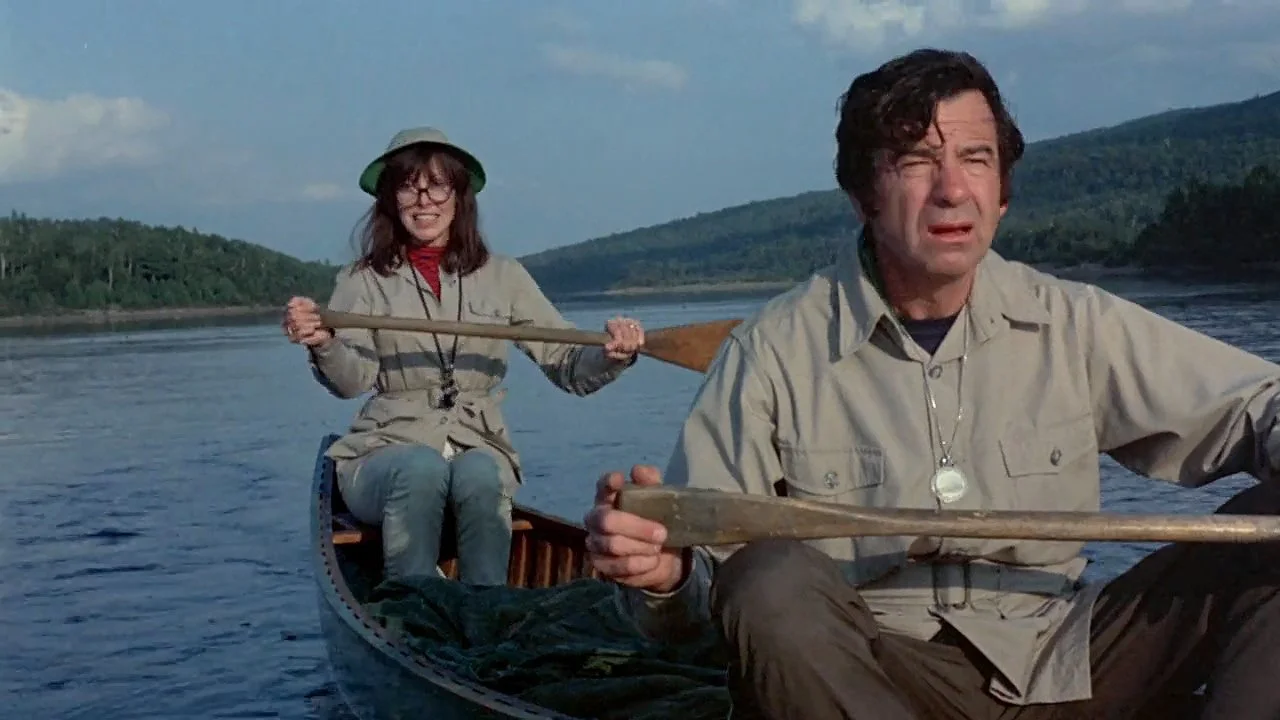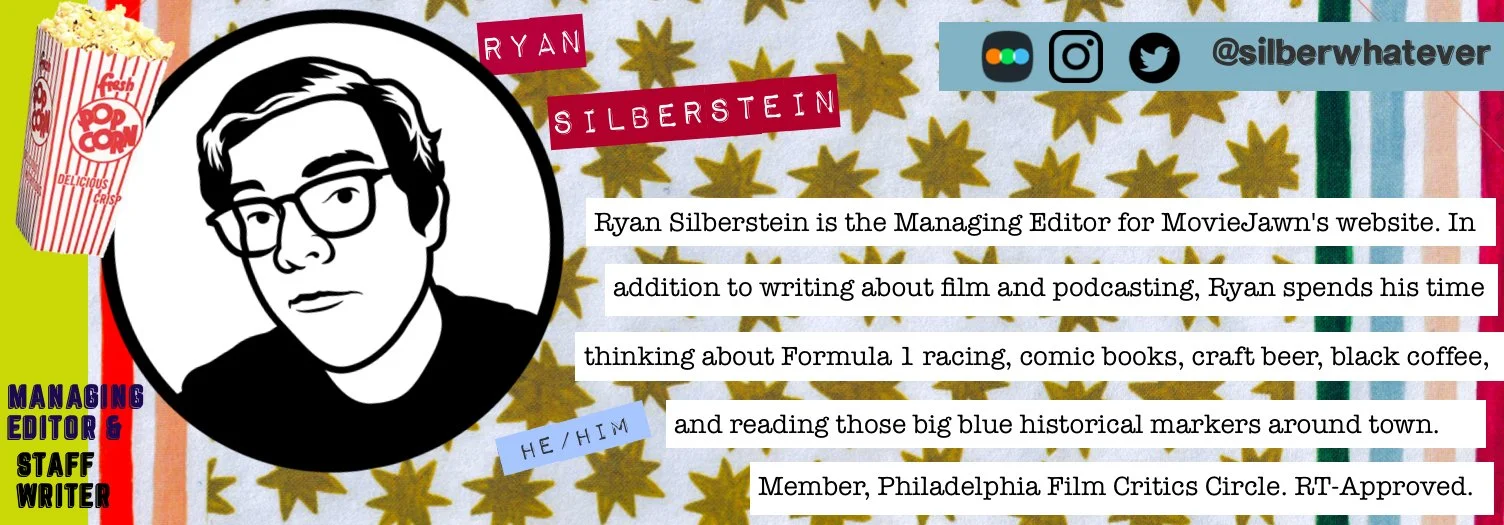Ryan Silberstein's Top 12 Discoveries of 2021
by Ryan Silberstein, Managing Editor, Red Herring
The best part of being a cinephile is a first watch of older films. Better yet, thanks to the Mahoning Drive-In, I was able to see a few films I love projected on 35mm onto a truly massive screen. While they didn’t make the cut for this list, I have to shout out Michael Mann’s The Keep, From Beyond and Happy Birthday to Me as new-to-me films I saw there. Also absent from this list are any of the 6 John Ford or the 4 new-to-me Peter Weir movies I watched this year, as I will likely be writing more about them in the near future.
Also, sign up for our Patreon to get an exclusive print zine featuring more of these lists, in addition to all of the other extras like an exclusive podcast and weekly streaming picks from our staff!
The Big Country (dir. William Wyler, 1958)
One reason I think I love Westerns is that no one has a job they have to leave their land to work. There are no offices, except for newspaper and telegraph men. If I just had to take care of my land, my animals, and my family, maybe I would feel more free, especially if I could always see mountains off in the distance. This past year has made the isolation of the frontier somewhat present, even in a dense suburb. That’s part of why I found this William Wyler epic deeply affecting, but there’s so much more here.
An exploration of civilization, morals, justice, and our own roles in society, this is a proper epic set against massive landscapes. Wyler reinforces the fact that it doesn't matter how big the country is–or how much wealth there is–people will always fight over resources and try to hoard what they can. Also, petty personal differences muck up everything. We are our own worst enemies.
While it is easy to lose some threads over the course of its sprawling runtime, every scene manages to be compelling. The restoration on the Criterion Channel is flawless and Wyler's cinematography hasn't aged a day since it was committed to celluloid. The colors are vibrant and rich, the textures of the land and the objects in the foreground are all impeccable. That earns this movie's 5-star rating in a big way, though the performances throughout are all stellar. I could not stop looking at this movie.
Cold Water (dir. Olivier Assayas, 1994)
I pulled my harpoon out of my dirty red bandana
I's playin' soft while Bobby sang the blues
Windshield wipers slappin' time
I's holdin' Bobby's hand in mine
We sang every song that driver knew
–“Me and Bobby McGee,” Janis Joplin
There’s a long party sequence in this movie, but there’s a particular scene within this that features teens throwing things on a massive bonfire and then observes them aimlessly dancing to rock music, silhouetted by the towering flames. In these images, Assayas associates these disaffected French youths with the most primal of human instincts, to exist in spite of everything. To feel. To survive. To create and destroy.
Le Doulos (dir. Jean-Pierre Melville, 1962)
I used to get disappointed when crime movies were about talking more than they were about heisting and shooting. So maybe it’s fitting I finally saw Le Doulos now. Jean-Pierre Melville is one of my favorite directors, and I am slowly working my way through his filmography, in part, so I can savor each one.
Though not quite as arresting as some of his others, this is an exemplary crime noir and police procedural. Le Doulos is a great example of Melville’s focus on faces, which help to track the tangle of truth and lies that constitute much of the film. There’s a narrative efficiency here, and much of the emotion is conveyed through the jazz score. Instead of a detective, the plot revolves around a police informant. The informant is never a hero. He is a rat to the criminal, a tool to the police. He can never be trusted, and yet his relationship to the cops and criminals tends to escalate violence rather quickly. The informant is the sound of the walls closing in.
But what elevated the film is the way it reveals information. It makes for a sometimes confusing watch, but seeing how the film’s screws tighten around its characters until the final moments add urgency to this occasionally sleepy exploration of the evil that men do.
Dragon Inn (dir. King Hu, 1967)
Dragon Inn was my second King Hu film after I watched The Valiant Ones for an I Saw it In a Movie episode about board games, I chose it in order to watch Goodbye, Dragon Inn as my final movie rented from Viva Video, since it seemed thematically appropriate. While I enjoyed Goodbye, the film within that film is the one that stuck with me.
Ever since I saw Crouching Tiger, Hidden Dragon forever ago, I’ve had the desire to explore wuxia films more, and I have finally found a way in, thanks to King Hu. This has all of the things I love about westerns and martial arts films, which makes it a joy to behold.
The Great Silence (dir. Sergio Corbucci, 1968)
“Wherever he goes, the silence of death follows.”
One of the bleakest films I’ve ever seen in terms of outlook. On the frontier, unfettered capitalism only serves to empower those who act without any moral sense other than the almighty dollar. Capitalism is the flywheel for the endless cycle of violence, and those who are the most ruthless are the most successful. I love how clear and pointed the message is while gunfights and skirmishes disappear into snow and dust. This is echoed across the film, as the characters and story fold in on themselves to demonstrate the futility of change in the face of powerful men.
Corbucci sets this anti-morality play in the snowy mountains, and a desolate white often exquisitely fills the frame in the many exteriors. The sky is also often colorless, blurring the line between heaven and hell.
The Incredible Shrinking Man (dir. Jack Arnold, 1957)
I put this on expecting a fun piece of schlock from the director of The Creature from the Black Lagoon (one of my fave monster mashes) and got so much more. It starts out in a fun way, seeing a man’s ego crumble as his stature is reduced—a great metaphor for so many things. Then it rockets towards an adventure that must have inspired Honey I Shrunk the Kids, but manages to keep increasing the existential dread along the way. A masterful piece of science fiction all the way around. An “incredible” blend of story, message, and effects work.
Let's Scare Jessica to Death (dir. John D. Hancock, 1971)
I really loved how this small movie captured the feel of the 60s dying in such an acute way without turning the story into a grand statement. That death is about the end of public trust, a rise in suspicion of strangers, and all kinds of doubt all around. In this horror film, John D. Hancock uses the Camilla template and Henry James storytelling to explore this theme about a group of hippie-ish friends who head to the suburbs for a new life and find a woman already living in their new house. Uncomfortable and riveting as it focuses in on the most dangerous gaslighter of all: one's own mind.
Marie Antoinette (dir. Sofia Coppola, 2006)
The perfect mix of delicate aesthetic with hard-hitting exploration of ennui, wealth, and privilege. Coppola never judges her characters for their environment. The courtly life chose them by birth. They are who they are because of their circumstances, which may be frivolous and silly, but they aren’t the ones who chose to be invested with political power either. It’s a great indictment of the system while also humanizing those who embody it.
A New Leaf (dir. Elaine May, 1971)
I watched all four of Elaine May’s films this year, and I loved each one. While they all have their own strengths, her first film is my favorite for one big reason. Walter Matthau is the actor I most identify with and, despite not being born rich like his character here, that connection is very present. Matthau’s weary and wry line delivery is well served by May’s comedy. Darkly funny and also a sweet romantic comedy, A New Leaf is like arsenic-topped ice cream.
The Piano (dir. Jane Campion, 1993)
A haunting story about longing, regret, and loneliness, The Piano was the second Jane Campion film I watched this year (Bright Star is also excellent), and it has truly stuck with me. Despite being a film I thought I knew from watching a lot of mid-90s SNL as a teen, the way that the narrative unfolds has stuck with me. Campion’s films revel in their slow smouldering, but when they take to flame, they burn bright.
Ran (dir. Akira Kurosawa, 1985)
I know Kurosawa is one of the most famous and lauded directors of all time, which can make his work seem unapproachable. But each of his films I’ve watched are as entertaining as they are artful. The blocking and staging alone would have been enough to get this film on my list. Just seeing the way that Kurosawa places his character in the frame shows an intuitive understanding of how people watch movies. The color, performances, and use of landscapes are equally amazing. Kurosawa never resorts to close shots to convey emotion, letting the surroundings enhance the emotion on screen.
Under the Blossoming Cherry Trees (dir. Masahiro Shinoda, 1975)
Masahiro Shinoda has a really weird sense of humor, which makes this Japanese folktale a surprising watch. It never quite goes exactly where I was expecting it to, and it’s all the better for that. I love fairy tales and mythological stories, and Under the Blossoming Cherry Trees embraces the dreamlike reality of those stories and then maximizes visual interest even when the pacing is slow. The story focuses on the ways men lead themselves into trouble while blaming women for their problems, and feels absolutely timeless. In addition, the colorful ending is just Shinoda showing off how gorgeous Japan is and will add to your list of reasons to visit the country.














